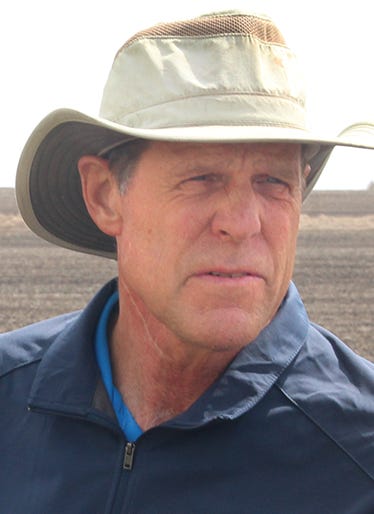June 25, 2018

By Jonathan Eisenthal
Working outdoors might be highest on the list of factors that give farmers job satisfaction.
However, the sun is a danger. Overexposure, which can happen quickly and without any overt signs, can lead to skin cancer.
There are steps you can take to minimize the risk.
Just as farmers take a multiphase approach to the things that endanger crops, like using preemerge herbicides at planting time and contact-killing controls later on, the farmer’s approach to sun protection should be multiphase.
“The World Health Organization and the Centers for Disease Control agree that people need to both use sunscreen lotion throughout the year, and to take steps to avoid the sun by wearing broad brim hats and shirts with long sleeves made of tightly woven material,” says Dr. DeAnn Lazovich, a cancer epidemiologist at the University of Minnesota.
So, farmers may want to consider ditching those seed caps in favor of something that protects the ears and the neck.
Melanoma on rise in Minnesota
The deadliest of the three major types of skin cancer is melanoma, and surveys show the incidence of the dread disease is rising. Minnesota is fourth in the nation for occurrence of melanoma.
“Agronomists talk about people scouting their fields to stay ahead of problems. Well, when it comes to this disease, people should be scouting their bodies for these abnormal moles, before they metastasize,” says Jay Zielske, a Pioneer Hybrid account manager who is a survivor of stage 4 melanoma. “Caught early on, it’s very treatable. You just have to be vigilant.”

Jay Zielske (Photo by Jonathan Eisenthal)

A handy primer from the American Cancer Society on how to look for telltale signs is called the ABCDEs of melanoma:
A is for asymmetry. One-half of a mole or birthmark does not match the other.
B is for border. The edges are irregular, ragged, notched or blurred.
C is for color. The color is not the same all over and may include different shades of brown or black, and sometimes patches of pink, red, white or blue.
D is for diameter. The spot is larger than 6 mm across (about a quarter-inch, the size of a pencil eraser), although melanomas can sometimes be smaller than this.
E is for evolving. The mole is changing in size, shape or color.
Zielske calculates that he spends half of his working hours outdoors. His case is unusual in that he didn’t find a lesion. The tipoff in his case was finding lumps along his jawline one morning while he was shaving. They turned out to be lymph nodes where the melanoma cancer had already spread. This was September 2014.
With scans, doctors discovered the cancer had already metastasized to his lungs, liver, gut and femur bone. Following surgery and treatment with powerful immunotherapy drugs, he was able to achieve a clear scan in June 2016.
Zielske notes that you must be aware of the risk — even when you are driving — because ultraviolet rays from the sun also penetrate glass.
“You get that false sense of security in the cab of a tractor, the cab of a pickup — but you’ve got those UV rays coming through,” says Zielske.
Many truck drivers now apply sunscreen to both their faces, their hands and their left arms — the side facing the car-door windows, Lazovich observes.
Using sunscreen is essential, and one must especially use it correctly. When covering arms, legs, hands, face and neck, a shot glass full of sunscreen is the right amount, and it needs to be applied a half-hour before going out in the sun, says Lazovich. Also, not all sunscreens are created equal. Those using zinc oxide tend to provide the best protection.
One of the best sources of unbiased information about the brands found on the store shelf is the Environmental Working Group, according to Lazovich. Check out EWG’s guide to sunscreens at ewg.org/sunscreen.
Other keys to cutting the risk: sunglasses that block UV, and remembering to reapply sunscreen every two hours.
“I want my story to create awareness,” Zielske says. “I also want everyone to know that people who are diagnosed with cancer have reason to hope.”
Eisenthal is a writer based in St. Paul, Minn.
You May Also Like




